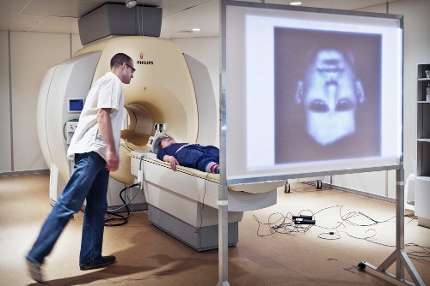In what direction do we want to develop neuro-imaging techniques? Now we can still make a choice
Neuroimaging techniques are a strongly emerging technology and could bring about a revolution in various areas of society, as long as we choose the direction we want to steer these developments in on time. This is one of the conclusions from a series of dialogues between neuroscientists and future users, organised for the research project Towards an appropriate societal embedding of neuroimaging. The project is part of the NWO research programme Responsible Innovation.
Techniques to make images of the brain (neuroimaging) are highly promising and are developing rapidly. To ensure we do not hit a dead end with the technology in forty years' time, a group of researchers from the Athena Institute at the VU University Amsterdam under the leadership of professor Jacqueline Broerse has brought makers and users together. They organised a series of dialogues between neuroscientists, professional practitioners, end users and citizens and enquired about their ideal views for the future. Four researchers are working on the project. On 1 October 2014, Marlous Arentshorst will defend her PhD thesis on future visions of neuroimaging in healthcare. Rosanne Edelenbosch studied the use of neuroimaging in education and will defend her PhD thesis on 16 December. Marije de Jong is now completing her research into the use of neuroimaging in the area of security and justice. Postdoc Frank Kupper evaluates the interactive research methodology and compares developments in the three domains. 'In the dialogues we organise we want to link different perspectives with each other and merge different experiential worlds', he says. 'We think that this can provide the basis for a socially responsible use of neuroimaging and a more effective innovation process.'
Surprising perspectives
In the science-society dialogues, public objections against neuroimaging could be clearly identified. The initial steps towards visions of the future that could count on an enthusiastic response were also made. The dialogues have yielded surprising new perspectives on how neuroimaging can be embedded in our society. The participants jointly noted that the direction in which we further develop and deploy the technology has yet to be established and so we can still choose this as a society. However, it will be easier to do this if we let go of stereotypical ideas about neuroimaging. Scientists, practitioners and end users were often surprised when the dialogue yielded a very different and less obvious application than they previously had in mind. If applied in this manner, the technology could be a key towards realising an ideal, or it might even revolutionise the system.
Healthcare
For example, in the future neuroimaging could be used to bring personalised healthcare within reach. Thanks to refined diagnostic techniques each individual could receive personalised care. Healthcare providers would shift their focus from treatment to prevention. If something were still not right then thanks to a miniaturised form of neuroimaging general practitioners would be able to establish the diagnosis themselves. Patients would then know what to expect far sooner. If we want to adopt this direction with neuroimaging then we need to start working on that now, concluded the participants in the dialogue. Such a decision has major consequences, for example the type of equipment needed in the future and how young medics are trained.
Education
A major concern in education is that neuroimaging might reduce children to just a brain, with fixed, unchangeable characteristics. There is also the fear that the assessment culture at school will become even more intensive and relentless. But that need not be the case, as a dialogue between neuroscientists and teachers revealed. Instead neuroimaging could help to better follow and encourage the development of children. Or it could be used to investigate group processes in the class room (social learning).
Security and justice
In the dialogue between neuroscientists and professionals from the security sector (police, justice and security guards) the most important ethical objections from the participants concerned a detailed risk profile for predicting criminal behaviour. This could stigmatise young people before they even get any where near committing a criminal offence. 'Concern turned into enthusiasm when one of the participants suggested imaging not the brain of a potential criminal but of a security guard', Frank Kupper recalls. 'Why is one guard better at "sniffing out" abnormal behaviour than another? How can we teach the guards to recognise bad intentions? And how can we teach them to do that without falling back on prejudices? If that succeeds then besides safer airports and stations we could also prevent young Moroccan men from being treated as suspects disproportionally more often.'
Collective wisdom
'The collective wisdom of technology developers and future technology users yields creative ideas that demonstrate how we can deploy neuroimaging to build up the society that we want', says research leader professor Jacqueline Broerse. 'This is the right time to discuss which innovations we want to realise with neuroimaging. The technology has developed far enough to see what will be possible in the future, but is young enough to be able to guide this. Now we can still make choices.'





















